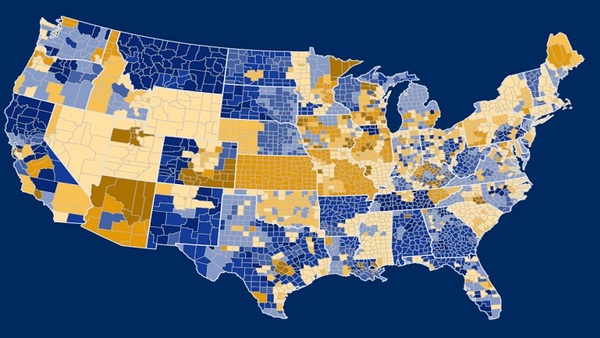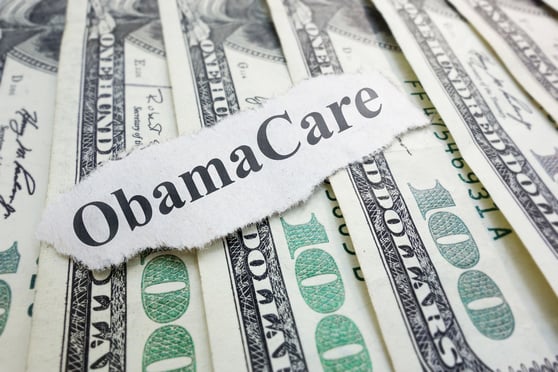The new administration has already begun the process ofrepealing the Affordable Care Act, as Congress works to dismantlethe various pieces.
|Related: What comes after the ACA?
|But there’s no consensus on how it’s to be done, or which partsof the law might be kept or how to pay for any provisions thatremain until Republicans present a new health care plan.
|There are several proposals making the rounds for therepeal/overhaul/dismantling of the law.
|And, as might be expected, while there are variations among theproposals made to tackle that repeal, there are some aspects thatare pretty much standard targets of successor legislation.
|Some would preserve certain provisions of the ACA, add otherstrictures affecting payment or eligibility or do nothing less thancompletely repeal the law and start over.
|The Transamerica Center for Health Studies hascompiled four of the most prominent proposed reforms or statementsfrom the president-elect and lawmakers and highlighted individualprovisions in each.
|Here are 10 of the changes these four proposals offer.
|10. Repeal of the individual mandate
This change is common to the president-elect’s statement, aswell as to proposals from Representative Tom Price, R-Georgia;House Speaker Paul Ryan, R-Wisconsin; and Senator Bill Cassidy,R-Louisiana.
|The individual mandate was one of the biggest objections to thelaw by both Republicans and Democrats, as well as by groups on bothsides of the political spectrum. And once enacted, it hasn’t beenpopular with the general public, either.
|However, insurers said that without it, they would end upcovering only the very ill, with the greatest dependence on medicalcare, without the addition of younger, healthier purchasers tooffset their needs. If coverage under the ACA was to be guaranteedissue, the individual mandate was essential — and younger,healthier people would avoid purchasing coverage unless they werepenalized for doing so.
|But just the repeal of the individual mandate and accompanyingtax penalties, according to the Committee for a Responsible FederalBudget, would add $250 billion dollars to the federal deficit overthe next 10 years.
|Related: ACA enrollees sicker, more expensive
|9. Change state requirements
Cassidy’s plan would require states to provide defaulthigh-deductible health insurance through a health plan withprescription drug coverage, an adequate provider network, HSAeligibility and childhood immunizations without co-pays. Inaddition, it would allow states to keep their current Exchange orreplace it with a state plan.
|Related: High deductibles leading to health careavoidance
|8. Replace the subsidies
This change is common to the president-elect’s statement, inthat he supports a full repeal of the ACA, and to proposals fromRepresentative Tom Price, R-Georgia; House Speaker Paul Ryan,R-Wisconsin; and Senator Bill Cassidy, R-Louisiana.
|But how they would do it differs. No specifics are available onTrump’s plan. Price suggests replacing current subsidies topurchase a health plan through an exchange with tax credits of$1,200 for adults and $900 per child.
|Ryan would replace current subsidies to purchase a health planthrough an exchange with tax incentives of $2,900 per individual or$5,700 per family for those who remain insured from plan year toplan year. And Cassidy would replace current subsidies to purchasea health plan through an Exchange with tax credits of $2,500 foradults and $1,500 per child.
|Related: 10 worst states for ACA premiums
|7. Replace guaranteed issue
Guaranteed issue has been a boon to the many who havepreexisting conditions and were previously uninsurable, but it’s onthe chopping block for all four options.
|While Trump supports the creation of high-risk pools for thosewith preexisting medical conditions, Price and Ryan would replaceit with a continuous coverage provision that would prohibitinsurers from denying coverage to individuals with preexistingconditions, provided that the individual remained continuouslyinsured for the previous 18 months.
|That would leave people who have a gap in coverage — perhapsbecause of a job loss — with no way to get coverage, if they’reunfortunate enough to have a preexisting condition.
|Cassidy’s option would replace it with a continuous coverageprovision mandating that insurers cover individuals withpreexisting conditions, provided that the individual remainedcontinuously insured for the previous 18 months. But he goes a stepfurther: if continuous coverage is stopped, the individual must paya penalty for each month without coverage up to the date of renewedcoverage.
|Related: GOP wants Trump to trim ACA benefits
|6. Allow health insurers to sell plans across statelines
Many experts have argued against this, saying that it will allowinsurers to sell low-coverage policies in states where they wereformerly required to provide a higher level of coverage. It iscommon to the Trump statement and the Price and Ryan plans.
|However, Cassidy’s plan differs in that it would require noessential health benefits and would implement state-by-stateminimum coverage standards.
|Related: Selling insurance across state lines likely won'twork
|5. Eliminate coverage of those under 26 on parents’policies
Neither the Trump statement nor the Price and Ryan plans mentionthis provision of the ACA, but the Cassidy plan would requirecoverage of dependents up to 26 years old.
|Related: ACA provision works against plansuccess
|4. Omission of Essential Health Benefitsrequirement
Neither the Trump statement nor the Price and Ryan plans mentionthis provision of the ACA. The Cassidy plan, as previouslymentioned, requires no essential health benefits.
|Related: Obama urges GOP to act responsibly onACA
|3. Change how health savings accounts (HSAs) areused
While the Trump statement doesn’t mention HSAs, the Price planwould create refundable tax credits for health insurance premiumsand HSA contributions, while raising the annual HSA contributionlimit and placing a limit on an employer’s contribution to healthcoverage that can be excluded from the employee’s taxable income.This will have limited, if any, benefit for employees who alreadyhave trouble finding the money to save in an HSA.
|Ryan’s plan would create new State Health Insurance Exchangesand allow participants to pay premiums with HSA funds without a taxpenalty — again, a provision that will have limited benefit forthose whose HSA savings don’t stretch to cover both premiums andother medical expenses.
|Cassidy’s plan would require states using HSA deposit systems toprovide funds into individual HSAs for health-related costs,including premiums.
|Related: Trump's plan expects to feature HSAs, expand therole of voluntary benefits
|2. Create high-risk pools
The Trump statement, as mentioned above, and the Price, Ryan andCassidy plans all address state-based high-risk pools, with somedifferences. Trump’s plan would create high-risk pools for thosewith preexisting conditions, while Ryan’s and Cassidy’s wouldcreate state-based high-risk pools for those with serious medicalconditions.
|Price’s would partially fund reinsurance for state high-riskpools for those with serious medical conditions.
|Related: Paul Ryan's ACA replacement plan
|1. Repeal Medicaid expansion
While the Trump statement does not mention Medicaid expansion,repeal of this provision of the ACA — unpopular with Republicangovernors — is a provision in the Price and Ryan plans as follows:repealed up to 138 percent of the federal poverty level, andreturned to 100 percent of FPL; in addition, the Price and Ryanplans would change funding from adjusted amounts per recipient toblock grants to states.
|The Cassidy plan, on the other hand, would offer optionalMedicaid expansion for states.
|Related: Rural hospitals hurt by lack of Medicaid expansion,study says
Complete your profile to continue reading and get FREE access to BenefitsPRO, part of your ALM digital membership.
Your access to unlimited BenefitsPRO content isn’t changing.
Once you are an ALM digital member, you’ll receive:
- Critical BenefitsPRO information including cutting edge post-reform success strategies, access to educational webcasts and videos, resources from industry leaders, and informative Newsletters.
- Exclusive discounts on ALM, BenefitsPRO magazine and BenefitsPRO.com events
- Access to other award-winning ALM websites including ThinkAdvisor.com and Law.com
Already have an account? Sign In
© 2024 ALM Global, LLC, All Rights Reserved. Request academic re-use from www.copyright.com. All other uses, submit a request to [email protected]. For more information visit Asset & Logo Licensing.


















